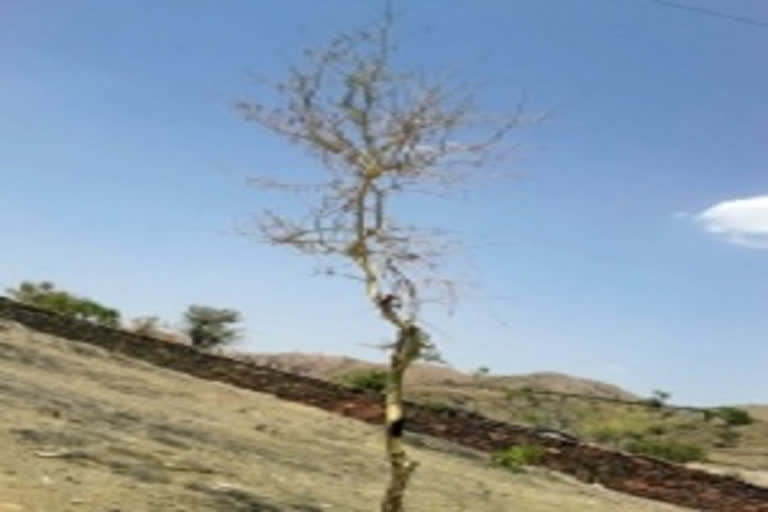Jaipur: A rare species of the Babool tree called Acacia eburnia has been found in Rajasthan after 68 years, said Dr Satish Sharma, an environmental scientist and retired Assistant Conservator of Forests.
This species was first spotted there in 1951 by botanist KS Sankhala while he was carrying out a survey of northwest Rajasthan. However, after that year, the tree remained untraced anywhere in Rajasthan.
For the last 68 years, there was no mention of these species anywhere in any of the researches or books, said Sharma.
Botanist MS Bhandari also did not mention about this species in his book "Flora of Indian Desert" written in 1978, said Sharma.
However, while working on the diversity of the acacia species in the Aravallis, he recently saw five trees of these species on the roadside in Dhar village, just 15 kilometres from Udaipur city.
Three of them were medium-sized while two of them were small sized. He studied the phenology of these trees and identified them from the mountain acacia species.
The geographical location of the tree is different this time as earlier in 1951, it was found in the northwest region of the state which is a desert area with scanty rainfall, but now it was found in Southern Aravalli in Udaipur which is a high rainfall area with dense forests.
Sharma said that while this species has been spotted for the first time in the Southern Aravalli hills, it has been found in Rajasthan for the second time.
Its reappearance in another belt shows that it is not an extinct species. However, a little more research is required on the part of botanists, Sharma said, adding that this tree is now full of flowers and seems to be blooming in Udaipur.
Sharma said that according to the published records of the Survey of India, this plant has made its second appearance in the last 68 years in the state, while it is its first appearance in Udaipur district.
Sharma has been congratulated by the members of the Vagad Nature Club along with environmentalists of the area for finding this rare species in Udaipur.
Sharma states that this species is found in the form of a large shrub or small tree. It is recognized from a distance due to its yellow bark which turns black after some time.
The flowers of this species are bright yellow in colour and it bears fruit in winter.
By May, its leaves fall and the beans ripen and begin to crack on the tree. White gum oozes from the stem when it is being cut.
Most of its properties match those of native acacia, but the colour of the stem and the texture of the beans is quite different and therefore it can be easily identified.
(IANS Report)
Also Read: Now, drones and planes to fight locust menace in Rajasthan



